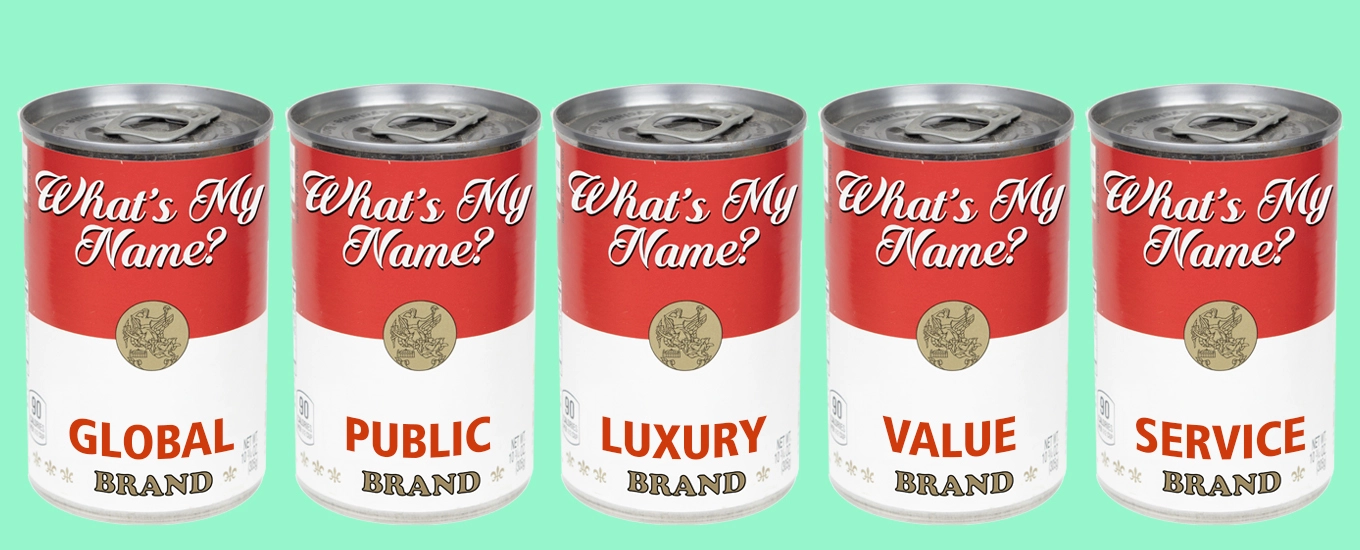An analysis of what makes some brand names more effective than others
Shakespeare’s Juliet, who should know better than most that names can have life-or-death consequences, nevertheless poses her famous question in Act 2, Scene 2 of Romeo and Juliet: “What’s in a name?” What is a name worth? Can a name add to or diminish the value of the person or thing it identifies?
The 16th-century star-crossed lover was referring to surnames—Montague and Capulet—but today, these questions are regularly asked of brand names. What’s in a name like “Meta,” “Kyndryl” or “Pearl Milling Company”? It’s difficult—maybe impossible—to measure the exact value of a brand name, but ample evidence points to a name’s ability to strengthen or weaken a brand, thereby having a tangible impact on the fate of a company or product.

Why Do Brand Names Matter?

We experience the influence of names in our everyday lives, not only in brand names, but in ordering food like Chilean sea bass (which sounds tastier than its original name, “Antarctic toothfish”) or labeling about half of Americans “pro-life” (as opposed to “anti-abortion”). Brand names affect our perceptions in similar ways, but they’re more than euphemisms. Consider the following three arguments for the importance of brand names.
1. Language Is Powerful
A recent study highlighted in The Wall Street Journal found that consumers feel they have more control over products whose names are easier to pronounce. Previous research has shown that people’s perceptions and memories change when different words are used to ask about them. But most of us don’t need empirical evidence of the power of language. We experience it regularly, in speeches, literary works and song lyrics. A company or product’s name is its first and best opportunity to harness that power.
2. The Name Outlasts Other Brand Assets
Ad campaigns, websites and even logos change over time. But barring a major problem—legal trouble, for example—a brand name typically stays the same for the life of a company or product. Getting the right name can be time-consuming and expensive, but think of it as an investment that will gain value over time. A boring, me-too name could undermine all your marketing efforts, while a name that sticks in customers’ minds may boost the effectiveness of every marketing dollar.
3. The Costs of Getting It Wrong Are High
To appreciate this final reason to value a good brand name, consider the opposite: a naming fail. These days, the media and general public love to hate brand names such as Quibi and Bodega. But the wrong name can lead to more than a few mean tweets and sarcastic headlines. More significant naming missteps can compel companies to rename due to legal challenges or recall products due to offensive meanings. Even if you’re not convinced of the potential benefits of a good brand name, it’s hard to deny the potential negative impact of the wrong name.
But what makes one name better than another? What determines how well a brand name will harness the power of language, ensure longevity and avoid the most common naming pitfalls?

The Qualities of Good Brand Names
Many branding agencies and consultants have attempted to list qualities of great brand names. But books, articles and social media posts that list “X principles of brand naming” usually overstate the case. For example, some say good brand names must be short. Brevity works, but so does “Rotten Tomatoes,” which clocks in at two words, five syllables and 14 letters. Many lists will encourage you to prioritize a name with an available dot-com domain. But neither Tesla nor Twitch started out with their exact name-dot-com domains, and as of this writing, peloton.com belongs to a “drilling and well data software” company. (The fitness company can be found at onepeleton.com.) Other self-proclaimed experts will even go so far as to insist every great brand name must contain a K, such as “Kodak” and “Nike.” Tell that to Apple, Amazon or the makers of Swiffer.
The truth is less satisfying: There are no silver bullets, magic formulas or mnemonic devices that will lead you to the perfect brand name. Instead, be sure to consider any name candidates through three lenses: strategic, creative and technical.
Great Brand Names Are Strategic
Not all brand names express relevant ideas. (What does “Virgin” have to do with a record shop, after all?) But when they do, those ideas should be meaningful—rooted in brand strategy, informed by a deep understanding of customers. Strategic names are also distinctive—they stand out against the competition—and adaptable enough to stretch as a company or product grows and changes.
Great Brand Names Are Creative

They not only sound good and look good (remember that most brand names wind up in logos), they’re also memorable—arguably the most important characteristic of any brand. Memorability depends partly on context. What are competitor brands named? Names that resonate on an emotional level can also be easier to remember, and the structure of a name—repetition, alliteration, rhyming, and yes, brevity—can also heavily impact its memorability.
Great Brand Names Must Clear Some Technical Hurdles
Finding a legally available name is increasingly difficult. It’s a big part of why naming is so hard. As an experiment, pretend you’re starting your own marketing agency tomorrow. Come up with three cool name ideas, then Google each one with a descriptor like “marketing agency” or “branding agency” and see whether someone’s already using them for a similar company or product. Chances are your first three ideas—along with the majority of your first hundred ideas—will already be in use. In addition to a relatively low level of legal risk, the best names are linguistically viable, meaning they avoid problematic meanings, associations and pronunciations in relevant languages. And lastly, they’re easy to spell and say out loud.
Importantly, the qualities listed above are not requirements for brand naming. Not all good brand names have all of these characteristics. And even the worst brand names will manage to cover some items from the list. (If nothing else, “Tronc,” the abandoned rebrand of Tribune Online Content, is pretty distinctive.) Too much of what makes one name better than another depends on context. What’s the name supposed to achieve? What are the competitors’ names? Who’s the target audience, and what will resonate with them?
Think of these three lenses and their constituent qualities not as a recipe for a great brand name, but as ways to evaluate name candidates or to inform a tough decision between two good name ideas.

How to Find or Create Good Names
Understanding the qualities of good names doesn’t necessarily make it easier to find or create one. Most first-time namers assume the best approach to name generation is a group brainstorm—get a few smart, creative people in a room with stacks of sticky notes and permanent markers. But most of the best naming work is done individually, paging through a thesaurus, diving into desktop research, looking for increasingly interesting or unexpected ways to express ideas. And generating a long list of name candidates is only half the battle.
The full naming process begins with a clear creative brief and includes preliminary trademark screening and linguistic checks. The last step in the process is arguably the hardest of all: selecting the final name. Once you’ve secured your strategic, creative and technically viable name, all that’s left to do is build and maintain a strong brand around it. Ay, there’s the rub.




